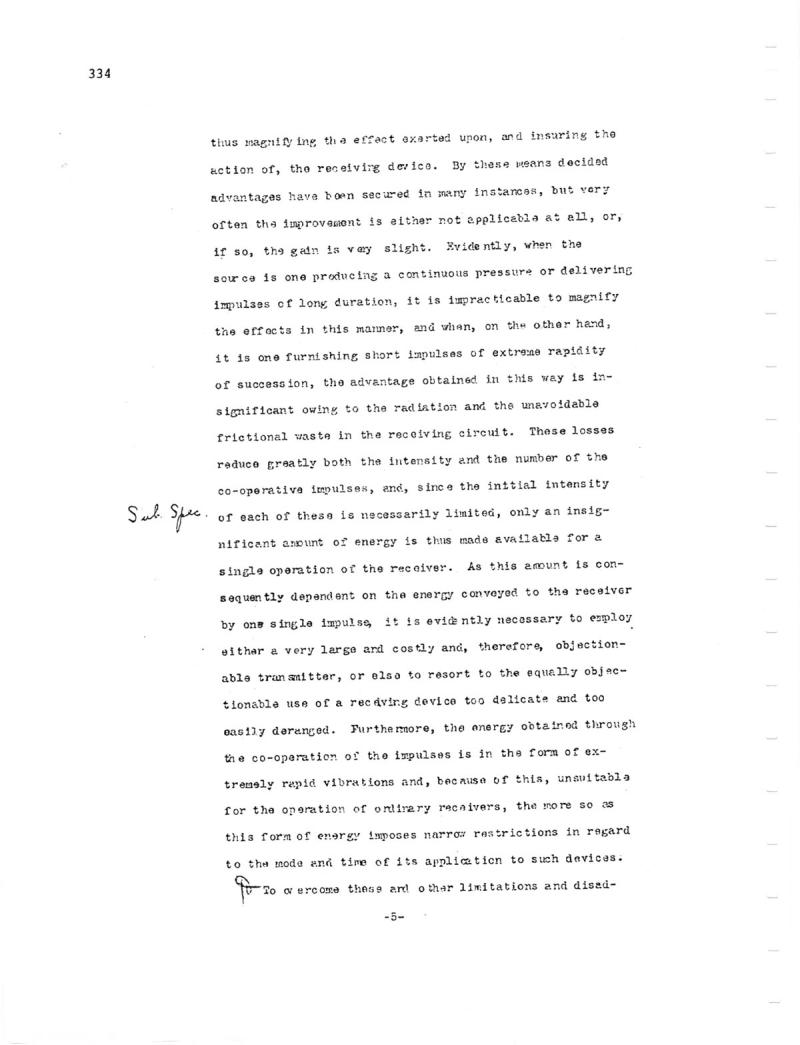
Nikola Tesla Patents
334 thus magnify ing the effect exerted upon, and insuring the By these means decided action of, the receiving device. advantages have been secured in many instances, but very often the improvement is either not applicable at all, or, if so, the gain is very slight. Evide ntly, when the source is one producing a continuous pressure or delivering impulses of long duration, it is impracticable to magnify the effects in this manner, and when, on the other hand, it is one furnishing short impulses of extreme rapidity of succession, the advantage obtained in this way is insignificant owing to the radiation and the unavoidable These losses frictional waste in the receiving circuit. reduce greatly both the intensity and the number of the co-operative impulses, and, since the initial intensity of each of these is necessarily limited, only an insignificant amount of energy is thus made available for a As this amount is consingle operation of the receiver. sequently dependent on the energy conveyed to the receiver by ons single impulse, it is evidently necessary to employ either a very large and costly and, therefore, objectionable transmitter, or else to resort to the equally objectionable use of a recáving device too delicate and too easily deranged. Furthermore, the energy obtained through the co-operation of the impulses is in the form of extremely rapid vibrations and, because of this, unsuitable for the operation of ordinary receivers, the more so as this form of energy imposes narrow restrictions in regard to the mode and time of its application to such devices. To overcome these and other limitations and disadTo so Sub. Spec.
